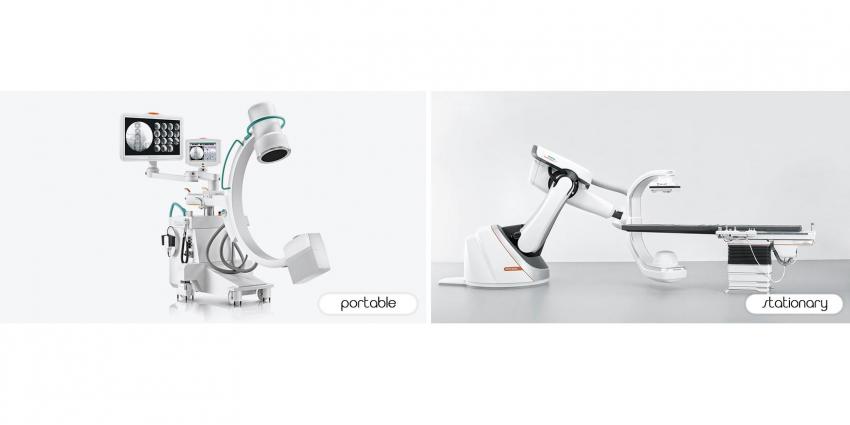C-arm type X-ray machines for surgery. What to pay attention to while choosing?
X-ray examination is a very important diagnostic stage in many branches of health care. There are many types of X-ray equipment, which differ both in fields of application and technical specifications. As of today, C-arm X-ray machines belong to the most efficient ones.

The device main features
C-arm is a common name for intraoperative, so-called, surgical X-ray machines. Actually, the device name is directly related to the tube-carrier shape which resembles the letter “C”. Just because of this shape, C-arms can be used to visualize most surgical interventions, starting with relatively simple orthopedic surgeries and ending with extremely complicated aortic valve implantations.
All surgical C-arms are subdivided into stationary, which can be floor or ceiling mounted, and portable. Nowadays, mini C-arms are gaining popularity as well. They are extremely convenient to use due to their high power and small size.

As to the basic components of the machines, all C-arms are the same:
- C-shaped tube-carrier;
- flat detector, providing high-quality digital images with minimum radiation exposure;
- monoblock unit, which includes an X-ray tube and a dedicated cooling system;
- monitor, which is usually located on the tube-carrier.
These are the main elements of C-arm X-rays. However, depending on the machine cost and its scope of application, it can be upgraded by a larger number of monitors, powerful software and devices to allow obtaining even better images.
What to pay attention to when choosing a C-arm machine

- C-arm type. If you plan to use the machine for complicated surgical interventions, we recommend you choose a stationary device with a large depth for better access to patients. If the system is to be used generally in a reception, it will be more cost-efficient to purchase a portable device or a mini C-arm.
- Power supply type and maximum device power. A high-frequency machine with maximum power will ensure X-ray tube longer operation life and minimum radiation exposure to patients.
- Focal spots size. It is worth choosing a C-arm machine with a low focal spots value. Thus, you will get maximally sharp images.
- Image exposure meter availability. It will enable automatic image generation.
- To obtain sharp images of both soft tissues and bones, the maximum dynamic range is important.
- If you plan to conduct cardiovascular examinations, you have to choose a C-arm equipped with a full package of vascular applications and ensuring the possibility to carry out digital subtraction angiography (DSA).

We have introduced the main technical specifications to you, and to dispel all doubts about choosing a C-arm machine type, let us consider the main advantages of this equipment:
- High quality digital images and the possibility to use various applications and filters to improve images directly during examinations.
- Convenient utilization and maneuverability due to a special C-shaped tube-carrier which provides a wide field of view with access to all the patient’s body anatomical areas.
- Multitasking. As mentioned before, C-arm machines are effectively used in almost all branches of health care.
- Safety and possibility to conduct examinations with minimal radiation exposure to the patient.
- Cost effectiveness in both the device operation and contrast examinations.

It is quite difficult to choose the right C-arm machine when a huge variety of this kind of equipment is present on the market. If you need advice in choosing the C-arm, the professional managers of the BiMedis platform will help you select the appropriate model according to your needs.
28.09.2017